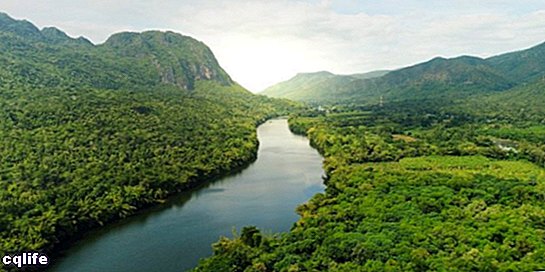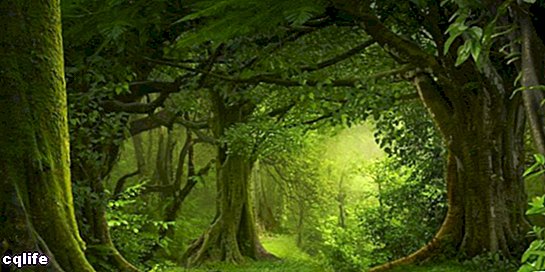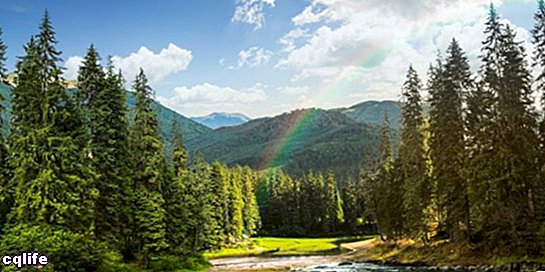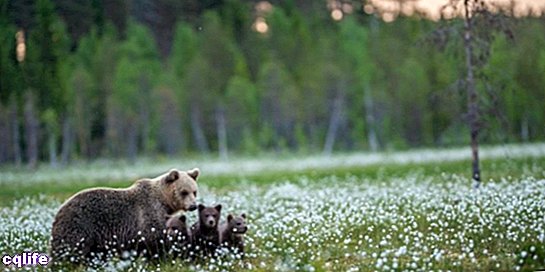- What is a forest?
- Forest types
- Forest fauna
- Geographical location of forests
- Importance of forests
- Forest exploitation
We explain what a forest is, what types exist, its flora and fauna. Also, its geographical location and importance.

What is a forest?
A forest is a type of ecosystem in which trees and shrubs predominate and is present in almost all continents and represents a third of the surface of planet Earth.
Forests are fundamental in the development of the planet since they have soils very fertile, a great variety of fauna and they are made up of trees that release oxygen, absorb carbon dioxide and regulate water flows. The weather, the type of vegetation and the fauna of a forest varies according to its geographic location.
Human action on native forests produces the deforestation, a practice that is carried out for economic purposes for the use of resources from the forest, urbanization or cultivation of cleared areas. Indiscriminate logging and the lack of reforestation is the cause of a decline in the world's forests.
Forest types

Forests are classified according to certain criteria.
According to its origin:
- Primary or native forests. They are forests that grow naturally without human intervention or planting.
- Secondary forests. They are forests that arose again after logging.
- Artificial forests. They are forests that were planted by humans.
According to its climate:
- Temperate forests. They are forests found in temperate climates. Its vegetation can be both leafy and mixed broadleaf as well as coniferous trees.
- Tropical forests. They are forests found in tropical climates in which rainfall abounds and broad-leaved trees that cover the ground from solar radiation.
- Subtropical forests. They are forests with a subtropical climate, either wet or dry.
- Boreal forests. They are forests with a subpolar climate that are usually made up of conifers with evergreen leaves.

According to the type of tree:
- Coniferous forests. They are forests located in Mountain regions, elevated and cold and dominated by conifers that are plants evergreen, such as pines, cedars, and firs.
- Hardwood forests. They are forests with broad-leaved trees, such as eucalyptus, oak and beech, and that present a diverse vegetation, require higher humidity than coniferous forests and are found in tropical or temperate climates.
- Mixed forests. They are forests that combine evergreen trees with broadleaf and non-evergreen trees.
According to the characteristics of the trees:
- Deciduous forests. They are forests made up of trees that lose their leaf at some time of the year.
- Evergreen forests. They are forests formed by trees that do not lose their leaves, so they are green and foliage throughout the year.
Forest fauna

The animals that inhabit forests vary according to the climate and altitude of each type of forest. For example:
- In temperate coniferous forests. They inhabit rabbits, coyotes, lynxes, raccoons, squirrels, owls, deer, beavers, porcupines, bats, pigeons, magpies, rattlesnakes, scorpions, weasels, among others.
- In temperate hardwood forests. They inhabit bears, goats, raccoons, squirrels, pumas, deer, deer, tigers, bats, pandas, wolves, woodpeckers, golden eagles, mice, among others.
- In tropical forests. They inhabit monkeys, ants, butterflies, eagles, capybaras, lizards, crocodiles, toucans, snakes, tigers, bats, wild boars, frogs, spiders, gorillas, tapirs, among others.
- In boreal forests. They inhabit bears, deer, owls, squirrels, lynxes, marmots, wolves, foxes, among others.
There are also specific animals of each forest, for example, in the forests that are between Argentina and Chile, guanacos, huemules, beavers, black-necked swans, steam ducks, among others, abound.
Geographical location of forests
The different types of forests are spread throughout the entire planet, however, most are in the territories of Russia, Brazil, Canada, the United States and China. Many of these forests are tropical and boreal.
Some of the most important and recognized forests in the world are: the Amazon in Brazil, the Black Forest in Germany, the Siberian Taiga in Russia, the Congo Forest in the Democratic Republic of the Congo, the boreal forests of Canada and the redwood forests. in United States.
Importance of forests
Like all ecosystems on the planet, forests are very important for the conservation of the world as we know it, since they are home to many and diverse species of animals and plants. In addition, the attractiveness of its scenery He turned them into tourist and recreation sites.
Trees and other plant species in the forest have various environmental and economic benefits, such as:
- They store carbon and release oxygen, allowing other life forms to develop.
- They avoid erosion of I usually.
- They provide wood, which is used as a form of Energy or for the construction of buildings or furniture.
- Regulate temperatures.
- They reduce the global warming, because they absorb carbon dioxide.
- They absorb excess rainfall, which prevents flooding.
- Provide food and other resources such as paper.
- They reduce the noise pollution.
- They regulate and protect river basins.
Forest exploitation
The risks to forests can be caused by humans, such as illegal logging, or naturally, such as fire or pests.
Due to human intervention and the use of wood or rubber, deforestation is a practice that threatens the world's forests. Illegal logging is responsible for a significant loss of native forest, so it is important to raise awareness in the population for the responsible use of natural resources that are obtained from the forests.
Through silvicultural measures and campaigns (which is the discipline that studies and works in forests), it seeks to make use of the resources that come from the forest, from which a large portion of the world population lives, and, in turn , take care of the environment by reforesting and restoring ecosystems that were altered.
